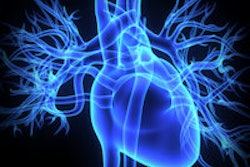Over the past two decades, the frequency and severity of abnormal stress SPECT myocardial perfusion imaging (MPI) studies have significantly decreased, with the prevalence of abnormal SPECT exams falling from 40.9% to 8.7%, researchers reported in the March 5 issue of the Journal of the American College of Cardiology.
In addition, the prevalence of ischemic SPECT MPI studies fell from 29.6% in 1991 to only 5% in 2009, according to Dr. Alan Rozanski, from the division of cardiology and the department of medicine at St. Luke's Roosevelt Hospital in New York City, and colleagues.
The decline in abnormal SPECT MPI studies was evident across the board, with reductions among younger and older patients, men and women, all ethnicities, asymptomatic and symptomatic patients, each coronary artery disease (CAD) risk factor subgroup, and patients undergoing exercise or pharmacological SPECT MPI.
"These findings suggest the need for developing more cost-effective strategies for the initial workup of patients who are presently at low risk for manifesting inducible myocardial ischemia during cardiac imaging procedures," the authors wrote (JACC, March 5, 2013, Vol. 61:9, pp. 1054-1065).
Rozanski and colleagues assessed 39,515 diagnostic patients undergoing stress-rest MPI who were part of an ongoing prospective registry of SPECT MPI patients at Cedars-Sinai Medical Center between January 1991 and December 2009.
The subjects were divided into four temporal subgroups: 1991 to 1995, 1996 to 2000, 2001 to 2005, and 2006 to 2009. For patients undergoing more than one SPECT MPI study, the researchers used the earliest SPECT MPI results.
During those years, there was also a noticeable trend toward more pharmacological stress tests, rather than exercise stress tests, among all age and weight groups. Pharmacological stress also had a greater association with abnormal SPECT MPI results than exercise stress tests.
What's behind the drop
So, what are some potential reasons for the decreases? Among the possibilities, Rozanski and colleagues cited a reduction in risk factors, which could have reduced ischemia by slowing the advance of atherosclerosis and/or by favorably affecting certain determinants of myocardial ischemia. Those positive changes include healthier lifestyles, such as fewer people smoking, as well as better resting blood pressure measurements.
The analysis also showed a decline in the frequency of SPECT MPI abnormality in each chest pain group, including patients with typical angina. The frequency of SPECT MPI abnormality was 51.6% among typical angina patients who were stress tested between 1991 and 1996, but it decreased to 22.6% among patients referred for testing between 2006 and 2009.
"Our data raise a question as to whether there has been a concomitant trend toward less severe angiographic disease in the presence of cardiac symptoms," the authors wrote.
The observation is supported by recent invasive and noninvasive angiographic studies suggesting a lower prevalence of angiographically significant CAD among typical angina patients, compared with older studies, they added.
Greater use of cardiac medications also may have contributed to the study's findings. One example is the increasing use of statins to reduce ischemia, including reversal of SPECT MPI perfusion defects. "However, the more aggressive use of statins does not account for the relatively comparable decline in SPECT MPI abnormality between both patients taking and patients not taking statins in our cohort," the authors wrote.
Finally, Rozanski and colleagues cited changes in patient referral patterns as a potential influence. As the mean age of the study's patient population decreased over time, physicians may be referring patients with milder intensity and/or duration of symptoms for cardiac stress testing. In addition, physicians may now refer patients with more severe symptoms directly to catheterization, the authors noted.
As for the clinical relevance of the findings, the "declining frequency of inducible myocardial ischemia, particularly among exercising patients without typical angina, suggests a need to refine the future diagnostic workup of patients with suspected CAD," Rozanski and colleagues wrote. There is a need for more cost-effective strategies for the initial workup of such patients.
For example, coronary artery calcium scanning with or without treadmill exercise electrocardiography could serve as a low-cost alternative to more expensive imaging tests for the initial workup of relatively lower-risk diagnostic patients, the authors recommended.
Study disclosure
Co-author Dr. Daniel Berman reported relationships with Lantheus Medical Imaging, Astellas Pharma US, GE Healthcare, Siemens Healthcare, Cardium Therapeutics, Spectrum Dynamics, and Cedars-Sinai.



















